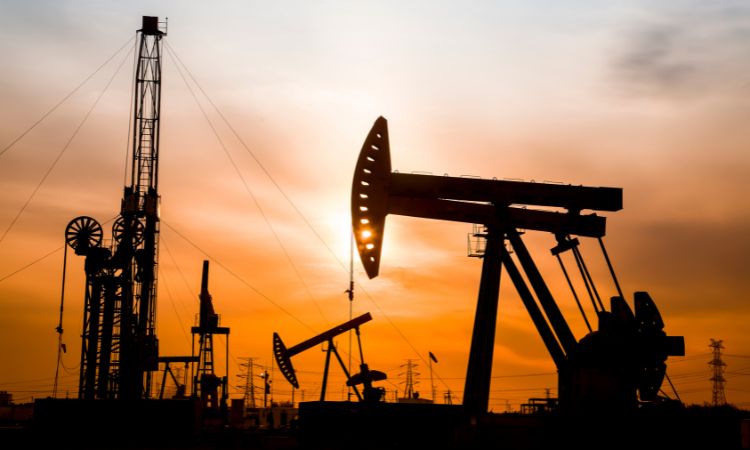The global oilfield services market size reached a value of USD 311.65 billion in 2023. The market is further expected to grow at a CAGR of 6.5% in the forecast period of 2024-2032 to reach a value of USD 550.09 billion by 2032. This exponential growth is not just a result of increased oil and gas exploration but also due to significant technological advancements that have revolutionized the oilfield services sector. In this blog post, we will delve into the dynamic world of oilfield services and explore how technology has played a pivotal role in shaping its present and future.
I. Historical Perspective
The oilfield services industry has come a long way from its humble beginnings. In the early days, drilling for oil was a labor-intensive and hazardous endeavor. Wooden derricks and cable tools were used for drilling, and safety standards were rudimentary at best. Technological innovations began to make their mark in the mid-20th century with the introduction of rotary drilling and more efficient drilling equipment. This marked the beginning of a transformation that would reshape the industry.
II. Current Technological Trends
Fast forward to the present, and the oilfield services sector is now on the cutting edge of technology. Various trends have emerged that are revolutionizing the way oil and gas exploration and production are conducted:
A. Automation and Robotics
Automation has significantly reduced the need for human intervention in dangerous and repetitive tasks. Autonomous drilling rigs, robotic inspection equipment, and remotely operated vehicles (ROVs) are becoming commonplace in the industry. These technologies not only improve safety but also increase operational efficiency.
B. IoT (Internet of Things)
The IoT is transforming oilfield operations through the interconnectedness of devices and sensors. Equipment and machinery are equipped with sensors that gather data in real-time, enabling better monitoring and predictive maintenance. This real-time data allows for quicker decision-making and reduces downtime.
C. Data Analytics and AI Applications
Data analytics and artificial intelligence (AI) are being used to analyze vast amounts of data generated during oil and gas operations. Machine learning algorithms can predict equipment failures, optimize drilling parameters, and even help identify new reservoirs. This data-driven approach enhances decision-making and resource allocation.
D. Remote Sensing and Satellite Technology
Satellites and remote sensing technologies are used to monitor oilfields and pipelines from space. This aerial perspective provides valuable insights into the condition of infrastructure, environmental impacts, and even potential security threats. It's an invaluable tool for oilfield management and risk mitigation.
III. Benefits of Technology
The integration of these technologies has brought about a multitude of benefits to the oilfield services sector:
A. Increased Efficiency and Productivity
Automation and data analytics streamline operations, reducing human error and optimizing processes. This results in increased efficiency, leading to higher productivity levels.
B. Improved Safety and Risk Management
Technology minimizes the exposure of workers to hazardous conditions. Automated systems can perform tasks in environments that would be unsafe for humans, and predictive maintenance reduces the risk of equipment failures that can lead to accidents.
C. Cost Reduction and Operational Optimization
Efficiency gains and predictive maintenance help in reducing operational costs. Optimized drilling techniques and equipment usage translate into significant savings for oilfield services companies.
D. Enhanced Environmental Monitoring and Compliance
Environmental sensors and monitoring systems help in maintaining compliance with environmental regulations. This ensures responsible resource extraction and reduces the industry's ecological footprint.
IV. Case Studies
To illustrate the real-world impact of technology on oilfield services, let's look at a couple of case studies:
A. Autonomous Drilling Rigs
One of the most transformative innovations has been the introduction of autonomous drilling rigs. These rigs can operate 24/7 without human intervention, dramatically increasing drilling efficiency. ExxonMobil, for example, has successfully implemented autonomous drilling technology in some of its operations, leading to significant cost savings and increased production.
B. Predictive Maintenance with AI
Chevron adopted AI-driven predictive maintenance for its equipment. By analyzing sensor data and historical maintenance records, they could predict equipment failures before they happened. This reduced downtime, saved on maintenance costs, and improved safety by avoiding unplanned shutdowns.
V. Future Technological Innovations
The oilfield services industry continues to evolve, with several exciting technological innovations on the horizon:
A. Emerging Technologies
Research is ongoing into even more advanced drilling techniques, materials, and equipment. Nano-scale technologies, advanced materials, and enhanced sensors promise to make drilling and production even more efficient.
B. Green Technologies
The industry is also increasingly focused on sustainability. Green technologies, such as carbon capture and utilization, are being explored to minimize the environmental impact of oil and gas operations. Companies are investing in renewable energy sources to power their operations and reduce their carbon footprint.
C. Potential Challenges and Barriers to Adoption
While the potential benefits of technology in oilfield services are substantial, there are challenges to overcome. These include concerns about data security, the cost of implementing new technologies, and the need for a skilled workforce capable of operating and maintaining advanced equipment.





Comments